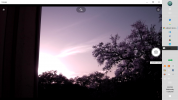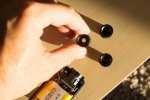Again, it doesn't work like that.
Just because an M12 lens doesn't have an iris doesn't mean it doesn't have an aperture. Take a good look through the front of any M12 lens and you will see the entrance pupil. The entrance pupil is not the same as the diameter of the front glass element although there is a mathematical relationship between the two. You can't "estimate" effective aperture because even a small miscalculation will make a huge difference in how much light can pass through the lens. This kind of thing would require precise measurements, assuming it would even be possible. Guessing or estimating won't work. Certainly, your previous statement that, "judging from the pictures the 8mm and 12mm would be about f1.2" is not only impossible to do but also your conclusion is highly unlikely.
Each ƒ/stop in photographic nomenclature allows twice the amount of light to reach the sensor as the previous (smaller) full stop.
Standard full ƒ-stop values are - 1, 1.4, 2, 2.8, 4, 5.6, 8, 11, 16, 22, 32, 45, 64
Half ƒ/stop values are 1, 1.2, 1.4, 1.7, 2, 2.4, 2.8, 3.3, 4, 4.8, 5.6, 6.7, 8, 9.5, 11, 13, 16, 19, 22
With each number to the next, the aperture decreases to half its size, allowing 50% less light through the lens (1 stop). So, the difference between say ƒ/1.2 and ƒ/1.4 is a half a stop which is significant. So again, guessing or estimating these numbers accurately enough is not possible.









